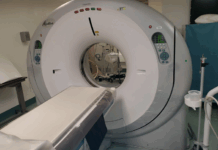With a financial state, which taxed the economy and spent its income in the economy and with highly productive agriculture, which produced permanent surplus, a market economy developed in pre -person China. By the end of King, as much as one third of the postparty of China, agricultural products were subjected to selling an exchange. If ten percent are taken as the norm for the tax rate born of the agricultural sector, the total excess of the agricultural sector will probably be about forty percent of its total production. This value of agricultural excess was the growth fund and the development of other sectors/actions in the economy. The transformation into money in China had the same lifestyle as an empire directly. State monetary yards produced serial coins on a regular basis for the domestic economy and outside. Due to the lack of monetary metals, symbolic currencies made of fabric or paper were used on a large scale, especially during the songs of the song and the yuan. Therefore, inflation has ended. Perhaps the most exciting phenomenon of the market was the constant import of China of foreign silver from the fifteenth to the nineteenth centuries during the period of the Ming-King. It was believed that in total, one third of silver produced from the new world ended in China, not to mention the quantity imported from neighboring Japan (Flynn and 1995 Jiraldez). Imported silver, therefore, made China a silver-standard economy, ultimately causing a price revolution after the market was saturated with foreign silver, which in turn led to the devaluation of the currency. Elementary credit systems, often a short -term type, also appeared in China. Buildings and the processing land were often used as a property security deposit to raise money. But there is no sign that there was a significant reduction in business risks for the lender. The frequent community and/or state intervention with contracts, blocking the transfer of land from debtors to creditors, were counterproductive. So, to a large extent, the generally accepted economy of China and the administrative-command economy rejected the market one. The nature of this market -based excess market has determined the multilayer structure of the Chinese domestic market. At the mass level, the market was limited, decentralized and democratic (Skinner 1964v “5). This was very compatible with the actual village autonomy through the empire, since the Imperial Government stopped at the level of county (with a total of about 1,000-1,500 of these districts in total). At the top of the structure of the market, the state controlled a large extent by some «key items of consumption» including salt (as during Ming and King), wine and iron and steel (as under Hanshui). Foreign trade was usually under a state monopoly or partial monopoly, also. This left a limited platform for professional merchants to work, a factor that ultimately determined the weakness of the influence of merchants in the economy and state policy.
© (c) NewsAsia, 2017-2021. Новости стран Азии.








